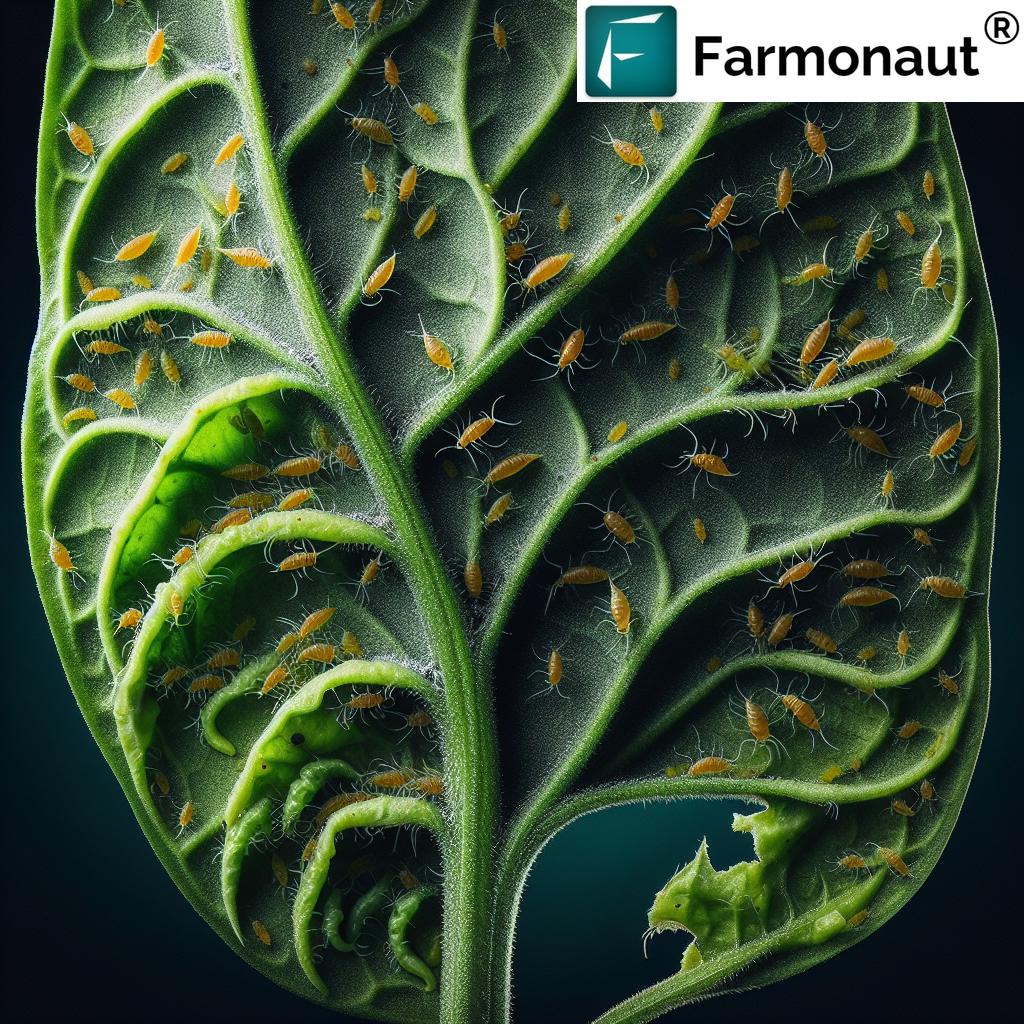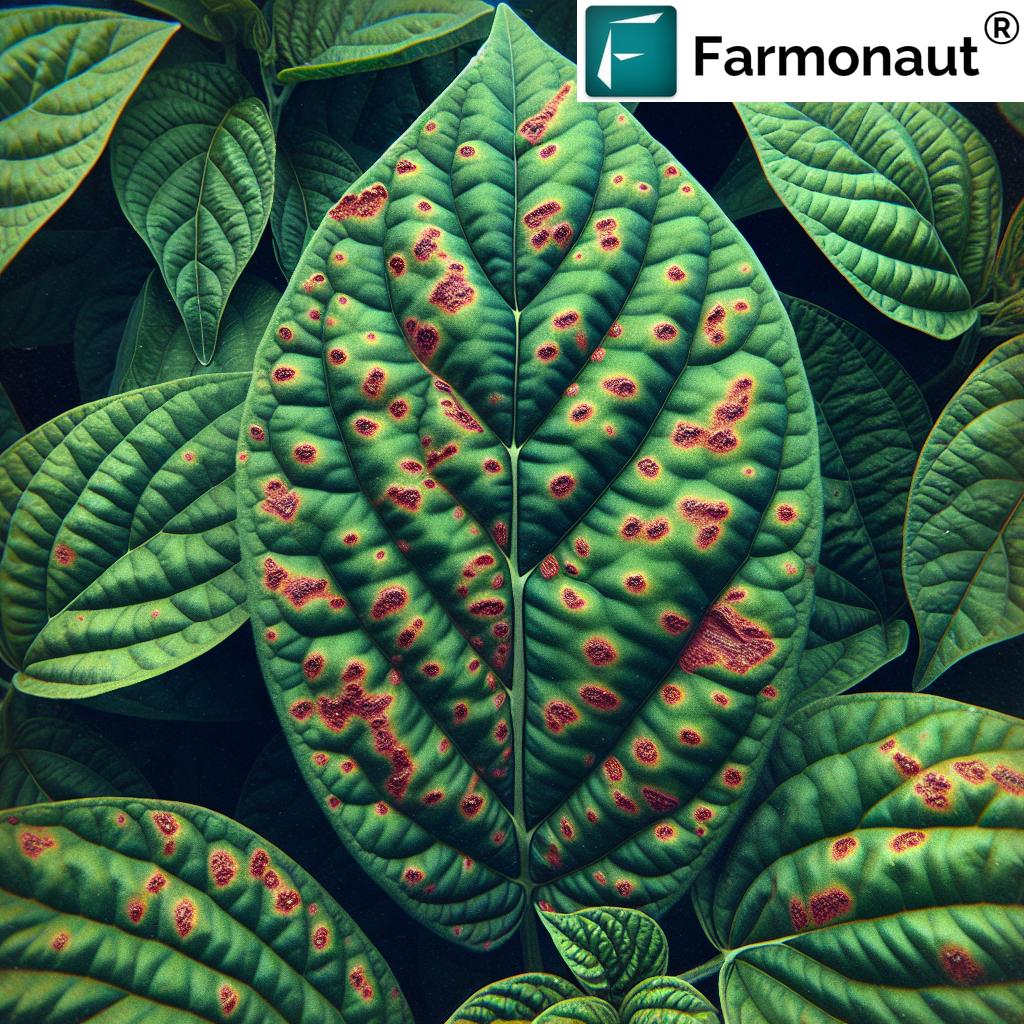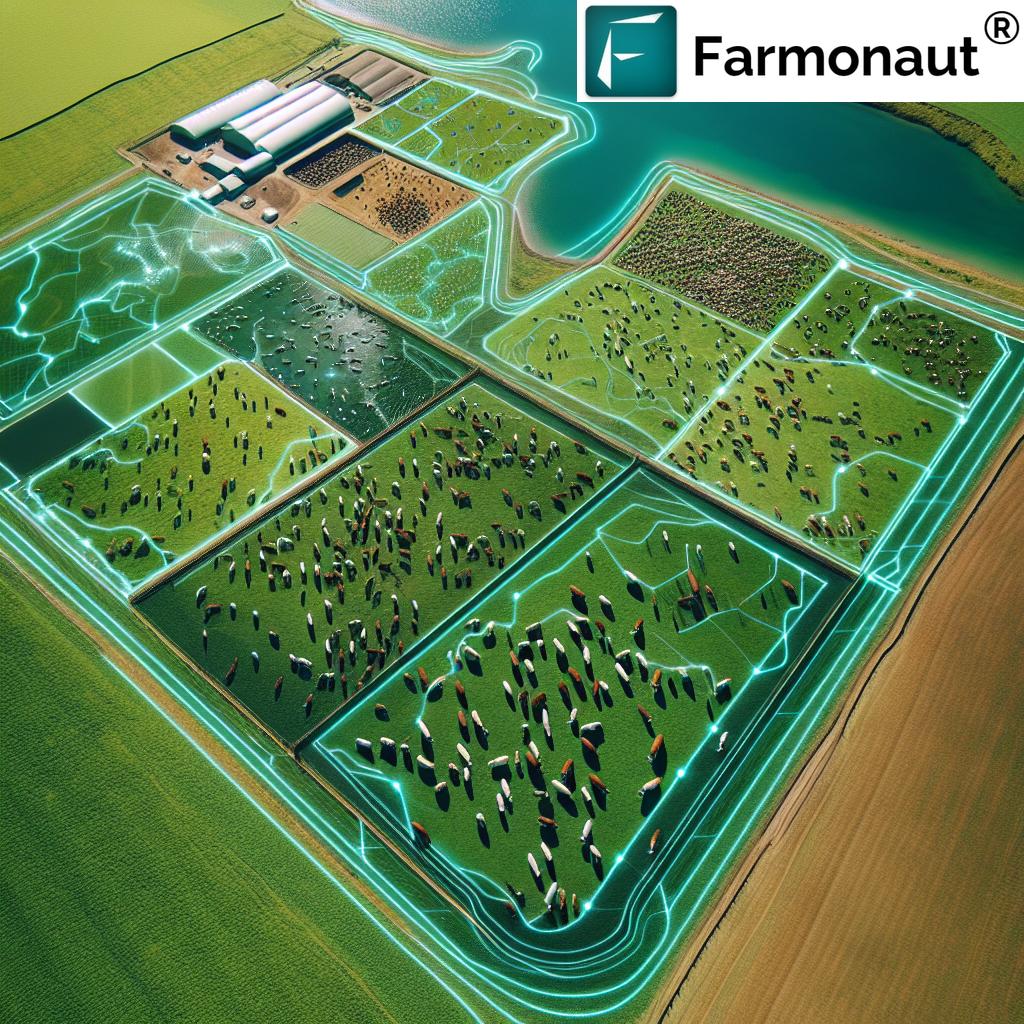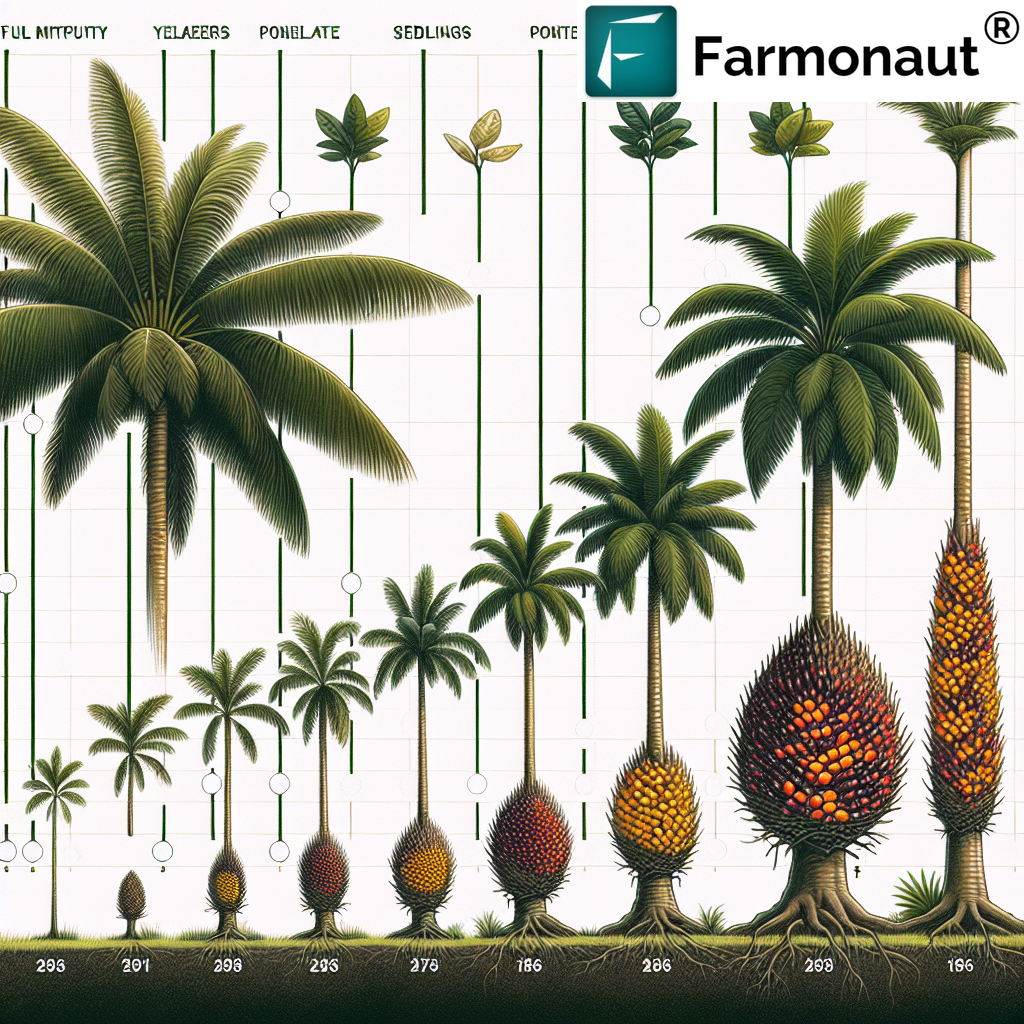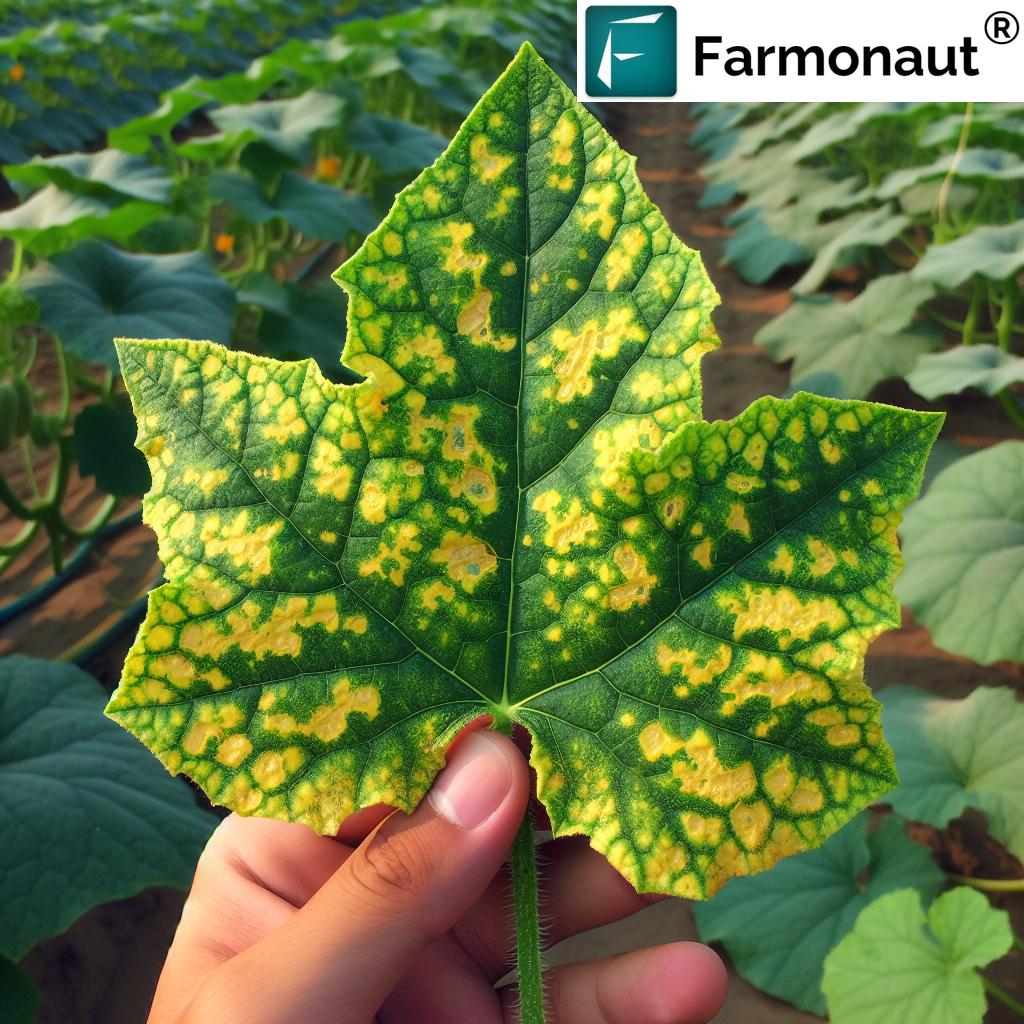Dracaena Marginata Care & Banksia Marginata in 2026: Sustainable Agriculture, Soil Health & Land Restoration
“Dracaena marginata can improve soil carbon by up to 12% in sustainable agriculture systems by 2026.”
Contents
- Introduction: The Evolving Landscape of Sustainable Agriculture in 2026
- Dracaena Marginata & Banksia Marginata: Species Overview
- Dracaena Marginata Care: Agricultural and Environmental Role
- Banksia Marginata in Sustainable Forestry & Land Restoration
- Comparative Impact Table: Dracaena vs Banksia Marginata
- Synergies, Innovation & the Future of Marginata Species in 2026 Farming Systems
- How Farmonaut Satellite Technology Powers Marginata Success
- Practical Care Guidelines for Dracaena and Banksia in 2026
- FAQs: Dracaena Marginata & Banksia Marginata
- Conclusion
Introduction: The Evolving Landscape of Sustainable Agriculture in 2026
As 2026 unfolds, the urgency for sustainable, climate-resilient, and resource-efficient farming systems continues to accelerate globally. Modern agriculture is shaped by integrated solutions that combat soil erosion, elevate biodiversity, reduce carbon emissions, and restore degraded lands. In this context, certain species have garnered attention for their unique roles in sustainable management: Dracaena marginata (commonly called Madagascar dragon tree) and Banksia marginata (the silver banksia). Their adaptability, ecological value, and economic potential position them as key assets in the toolkit for land restoration, organic farming, and future-ready environmental stewardship.
This blog provides a deep dive into dracaena marginata care in sustainable agriculture, the role of the Banksia marginata in eco-restoration, and how integrating these marginata species transforms soils and landscapes in 2026’s evolving agricultural paradigm.
Dracaena Marginata & Banksia Marginata: Species Overview
Understanding the characteristics and ecological roles of Dracaena marginata and Banksia marginata is critical for valuing their contributions to sustainable agriculture and forestry in 2026.
Dracaena Marginata Care: Agricultural and Environmental Role
Dracaena marginata, the Madagascar dragon tree, is a hardy, evergreen species originally found in the arid, sun-soaked regions of Madagascar. While celebrated as a decorative houseplant (thanks to its striking appearance and low maintenance), its relevance in agriculture, forestry, and land stabilization has grown considerably.
Key features of this dracaena tree include:
- Deep Root System: Enables soil stabilization on slopes and embankments, reducing erosion and runoff — a need in erosion-prone dryland farming and reforestation.
- Drought Resistance: Thrives in arid and semi-arid regions, requiring minimal water and tolerating a variety of soils (dracaena marginata care is considered straightforward for these reasons).
- Allelopathic Properties: Naturally suppresses certain weed species and limits unwanted plant competition, reducing the need for chemical herbicides.
- Organic & Regenerative Agriculture: Dracaena’s hardiness and natural pest suppressant qualities align perfectly with current organic farming and integrated pest management (IPM) principles.
- Air and Soil Purification: Its leaf extracts show promise as natural bio-pesticides and soil health enhancers, based on ongoing research, thus supporting sustainable farming goals for the future.
Such adaptability and resilience make dracaena marginata an increasingly important component in agroforestry, restoration, and climate-smart agriculture initiatives.
Dracaena Marginata in Evolving Farming Systems (2025-2026)
By 2026, dracaena marginata is a model species for smallholder and commercial farms seeking to reduce inputs, rehabilitate soils, and diversify cropping.
- Soil Carbon Sequestration: Ongoing research shows dracaena plantings can increase soil organic carbon by up to 12%. Improved soil carbon enhances structure, water retention, and overall fertility.
- Windbreaks & Shelterbelts: Mature dracaena trees shield crops from damaging winds, reduce transpiration loss, and foster microclimates that support higher yields.
- Biodiversity Promotion: Intercropping with dracaena marginata aids beneficial insects and microbial life—for organic, regenerative agroecosystems.
Integrating dracaena marginata with sensor-based and satellite crop monitoring (e.g., using Farmonaut’s Large-Scale Farm Management platform) empowers growers to optimize plantation design, track soil health, and maximize climate resilience.
Practical Dracaena Marginata Care in 2026
The shift in dracaena marginata care reflects evolving sustainable agriculture needs:
- Soil: Well-drained, loamy to sandy soils (resisting poor drainage and compacted land) maximize growth and root development.
- Water: Periodic deep watering; dracaena is drought-tolerant and requires minimal irrigation even in dryland initiatives.
- Light: Full sun to partial shade. In agroforestry belts, plant as a companion to more shade-tolerant crops.
- Maintenance: Low. Regular removal of dead leaves enhances appearance and nutrient cycling.
- Pests & Disease: Rarely an issue thanks to dracaena’s natural resilience; potential to use leaf extracts for natural plant protection.
Banksia Marginata in Sustainable Forestry & Land Restoration
Banksia marginata, the silver banksia, is a robust native australian tree highly valued for ecological restoration, biodiversity, and resilient land rehabilitation in 2026.
- Adaptability: Thrives in various soil types including poor, sandy, or degraded soils — ideal for reforestation after mining or bushfire damage.
- Root System: Dense, fibrous roots stabilize loose and eroded soils, accelerating recovery of degraded lands.
- Biodiversity: Banksia flowers provide nectar for bees, birds, and pollinators — a cornerstone for ecosystem revitalization.
- Windbreaks & Shelter: Used as shelterbelts, banksia marginata reduces wind erosion and protects crops, livestock, or young tree plantations.
- Leaf Litter: Rich organic material from banksia’s fallen leaves enhances soil fertility, supporting the return and proliferation of native flora and fauna.
- Climate Benefits: Carbon sequestration through steady biomass accumulation and resilient stand establishment, even under climate-stressed conditions.
“Banksia marginata plantings increased land restoration success rates by 18% in 2025’s evolving farming landscapes.”
Banksia Marginata’s Expanding Role in Mining Rehabilitation & Sustainable Agriculture
By leveraging banksia marginata’s robust adaptability and unique ecological functions, restoration practitioners in 2026 can:
- Revitalize Mining Sites: Banksia is increasingly the species of choice for restoring nutrient-poor, compacted, or sandy post-mining soils.
- Support Sustainable Forestry: Cultivation of banksia marginata assists in maintaining native woodland character while offering economic value through honey production and limited, high-value timber harvests.
- Enhance Pollinator Services: Large-scale flowering attracts a diverse pollinator community, directly benefitting adjacent agricultural systems.
- Improve Soil Health: Intensive leaf litter mulch and organic matter output build up new soil layers, accelerate nutrient cycling, and suppress weed growth naturally.
For farm managers using satellite-driven platforms (see Fleet Management tools from Farmonaut), tracking the health of large Banksia marginata plantations or evaluating land restoration progress is more actionable and cost-effective than ever.
Comparative Impact Table: Dracaena Marginata vs Banksia Marginata (2026)
| Plant Species | Estimated Soil Improvement (%) in 2026 | Carbon Sequestration Potential (tons/ha/year) | Drought Tolerance Level | Recommended Farming System | Biodiversity Support Index (1-10) |
|---|---|---|---|---|---|
| Dracaena marginata | Up to 12% | 2-3 | High | Agroforestry strips, dryland mixed-crop systems, slope stabilization | 7 |
| Banksia marginata | Up to 17% | 2.5-4 | Medium-High | Native forestry, reforestation, mine site restoration, shelterbelts | 9 |
*Values are projected for typical management scenarios in 2025-2026. Biodiversity support index is based on pollinator attraction, habitat provision, and species co-benefits.
Marginata Species: Relevance for Sustainable Agriculture and Forestry
Both dracaena marginata and banksia marginata offer distinct soil, climate, and biodiversity benefits. If integrating wide shelterbelts and maximizing pollinator services, banksia stands out; for dryland slope stabilization and mixed organic cropping, dracaena emerges as the species of choice.
Synergies & Innovation: Future-Proofing Marginata Roles in 2026 Farming Systems
The success of marginata species in sustainable land management hinges on recognizing and combining their unique roles in current and future systems:
- Mixed-Planting Strategies: Planting dracaena in contour belts within banksia-dominated reforestation areas boosts both soil stabilization and pollinator service.
- Erosion Control: Deep-rooted dracaena reduces surface runoff on sloping land, while fibrous-rooted banksia binds sandy soils susceptible to wind and water erosion.
- Resource Optimization: Modern platforms (such as Farmonaut’s Carbon Footprinting Service) help quantify sequestration benefits from these species, supporting farm management and sustainability certification in 2026.
- Reduced Chemical Input: Banksia’s organic mulch and dracaena’s weed suppression properties minimize the need for synthetic fertilizers and herbicides, reinforcing organic and regenerative agriculture standards.
For governments and land managers, these species represent core building blocks in evolving climate-smart resource management plans.
Integrated Technology: Satellite & Data-Driven Marginata Management
The rise of affordable satellite, AI, and blockchain technology further magnifies the role of dracaena marginata and banksia marginata in 2026. With precise monitoring, real-time alerts, and traceability, marginata-based re/afforestation projects and organic farms can scale upwards sustainably.
- Traceability: Farmonaut’s Traceability Solutions help users document every stage of planting, growth, and harvest for marginata crops — critical for certification bodies and export markets.
- Yield & Health Analysis: High-resolution NDVI and soil monitoring via Farmonaut’s platform deliver actionable insights for maximizing the growth, drought tolerance, and carbon impact of marginata mixes.
- Farm Advisory: Crop, Plantation & Forest Advisory Tools ensure adaptive management of dracaena and banksia species under variable climate regimes.
How Farmonaut Satellite Technology Powers Marginata Success
At Farmonaut, we provide cost-effective, real-time monitoring solutions that are instrumental for marginata-centric land management:
- Satellite-Based Monitoring: Utilizing high-resolution multispectral data, our users monitor the growth, health, and canopy density of dracaena and banksia marginata plantations over years. The Farmonaut API and developer docs enable seamless integration of these insights into farm and forestry management systems.
- Site-Specific Advisory: Our Jeevn AI Advisory System offers targeted climate, yield, and soil improvement strategies for large-scale marginata projects, supporting adaptation even under unpredictable weather.
- Real-Time Resource Optimization: Tools such as Fleet Management streamline the operation of farm machinery during planting, maintenance, and harvesting of both dracaena and banksia marginata.
- Environmental Impact Tracking: Our carbon footprint monitoring (Carbon Footprinting services) lets managers document and verify the tangible environmental benefits of marginata-based restoration.
- Financing and Insurance: Through crop loan and insurance verification tools, marginata growers and project developers receive timely, data-backed approval for sustainable agricultural investments.
This ecosystem ensures that both individual stewards and large-scale operators can align their plantation and restoration activities with global best practices for sustainability, traceability, and productivity.
Practical Care Guidelines for Dracaena & Banksia Marginata in 2026
Best Practices for Dracaena Marginata Care (Eco-Forestry & Agroforestry)
- Preparing Land: Ensure good drainage and break surface compaction; avoid waterlogging. Integrate with vetiver or native grass strips for added erosion resistance.
- Spacing: For soil stabilization, plant on 1–2 m centers along contours or slope shoulders. In mixed systems, alternate with legume shrubs or native ground covers.
- Planting: Transplant at the onset of the rainy season for best establishment in low-water contexts. Mulch base with composted organic matter to enhance soil and suppress weed emergence.
- Irrigation: Water deeply but infrequently. Overwatering can increase disease risk and weaken drought hardiness.
- Maintenance: Remove spent lower leaves; recycle as mulch directly onto root zones. Monitor pest populations as a precaution, though mature trees rarely require intervention.
- Integrated Management: Use satellite data to monitor soil moisture and early warning for drought stress (review options via Farmonaut’s Crop, Plantation & Forest Advisory tools).
Practical Care for Banksia Marginata (Restoration, Shelterbelts, Forestry)
- Site Selection: Choose sites with full sun, not prone to long-term waterlogging. Banksia will tolerate acidic, sandy, or disturbed soils often ignored by traditional forestry.
- Soil Preparation: Minimal required; break surface crust and incorporate local organic material or leaf litter to jumpstart microbial action on degraded land.
- Planting Density: 2–3 m spacing is common for shelterbelts or restoration; closer for infill planting on erosion hotspots.
- Weed Management: Use thick banksia leaf mulch mats; pair with dracaena where weed competition or erosion is severe.
- Pest & Disease: Banksia is resilient but monitor for root rot in ultra-poor drainage areas.
- Technology Integration: Map new banksia plantings and shelterbelt progression using satellite-based tools for periodic assessment (monitor change detection via area or plot mapping features).
Both species benefit from organic management practices, minimal chemical input, and on-site recycling of pruning/mulch for long-term ecosystem resilience and productivity.
Frequently Asked Questions: Dracaena Marginata & Banksia Marginata
-
Q: Is Dracaena marginata suitable for commercial farming or just for landscaping?
While dracaena marginata is well-known as a decorative houseplant, its resilience and soil-improving abilities make it ideally suited for commercial dryland agriculture, organic farming, and agroforestry systems by 2026.
-
Q: How does Banksia marginata support biodiversity recovery?
Banksia marginata’s abundant flowers support bees, birds, and pollinator invertebrates. Its dense foliage provides habitat, and the shelterbelt structure improves site conditions for recolonizing native flora and fauna.
-
Q: What are the environmental risks of introducing these species?
Both species are generally low risk when used in their suitable climatic and soil contexts. Always favor local ecotypes. Avoid overplanting outside their adaptive range to reduce risks of invasive behavior.
-
Q: Can Farmonaut help track the progress of my marginata-based land restoration?
Yes! Our platform provides satellite-driven insights into vegetation, soil improvement, carbon storage, and restoration progress for all plantation and forestry projects.
-
Q: Which species is better for drought-prone, sandy lands?
Dracaena marginata has high drought tolerance and establishes well in sandy, low-water soils. However, for ecological restoration or windbreaks, banksia marginata also performs well in similar conditions with benefits for pollinators and native ecosystem support.
-
Q: Is loan or insurance support available for marginata plantations?
Users can utilize Farmonaut’s crop loan and insurance services for satellite-verified claims and risk mitigation in marginata-focused agriculture or restoration activities.
-
Q: Can dracaena or banksia marginata be integrated in organic farming?
Yes. Both are very well-suited to organic systems—dracaena for natural weed and pest management, banksia for soil fertility and biodiversity enhancement, with minimal synthetic input.
Conclusion
In the era of 2026 and beyond, dracaena marginata and banksia marginata demonstrate how careful species selection and integrated land management can deliver high-impact, nature-positive outcomes for agriculture, forestry, and land restoration.
With advances in satellite monitoring, AI-based management, and blockchain traceability—including the broad suite of tools from Farmonaut—farmers, restoration professionals, and policy makers can confidently leverage the full ecological and economic potential of these two marginata species. As global pressures on soils, water, and climate intensify, embracing innovative marginata strategies is essential to resilient, restorative landscapes and sustainable food systems of the future.






